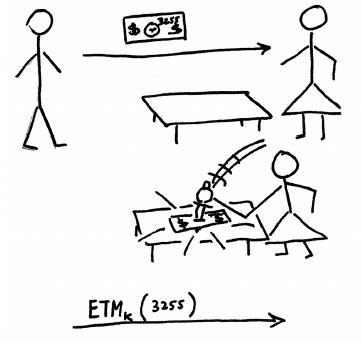Until now it was widely believed that the only defense against relay attacks was distance bounding. In a paper presented today at Financial Cryptography 2010 we introduce a conceptually new approach for detecting and preventing relay attacks, using multichannel protocols.
We have been working on multichannel protocols since 2005. Different channels have different advantages and disadvantages and therefore one may build a better security protocol by combining different channels for different messages in the protocol trace. (For example a radio channel like Bluetooth has high bandwidth, low latency and good usability but leaves you in doubt as to whether the message really came from the announced sender; whereas a visual channel in which you acquire a barcode with a scanner or camera has low bandwidth and poorer usability but gives stronger assurance about where the message came from.)
In this new paper we apply the multichannel paradigm to the problem of countering relay attacks. We introduce a family of protocols in which at least one message is sent over a special “unrelayable” channel. The core idea is that one channel connects the verifier to the principal with whom she shares the prearranged secret K, while another channel (the unrelayable one) connects her to the prover who is actually in front of her; and the men in the middle, however much they relay, can’t get it right on both of these channels simultaneously.
We convey this idea with several stories. Don’t take them too literally but they let us illustrate and discuss all the key security points.

This work is exciting for us because it opens up a new field. We look forward to other researchers following it up with implementations of unrelayable channels and with formal tools for the analysis of such protocols.
Frank Stajano, Ford-Long Wong, Bruce Christianson. Multichannel protocols to prevent relay attacks (preliminary; the final revised version of the full paper will be published in Springer LNCS)